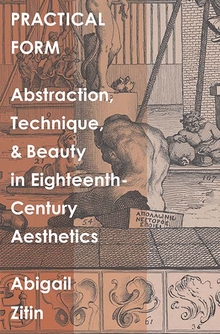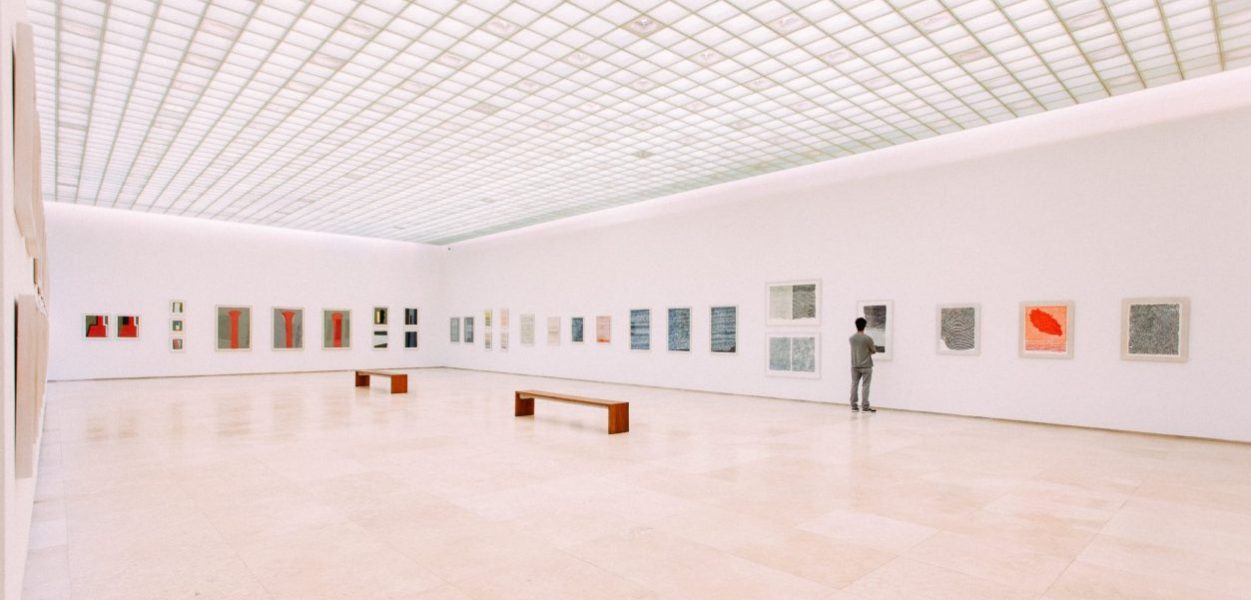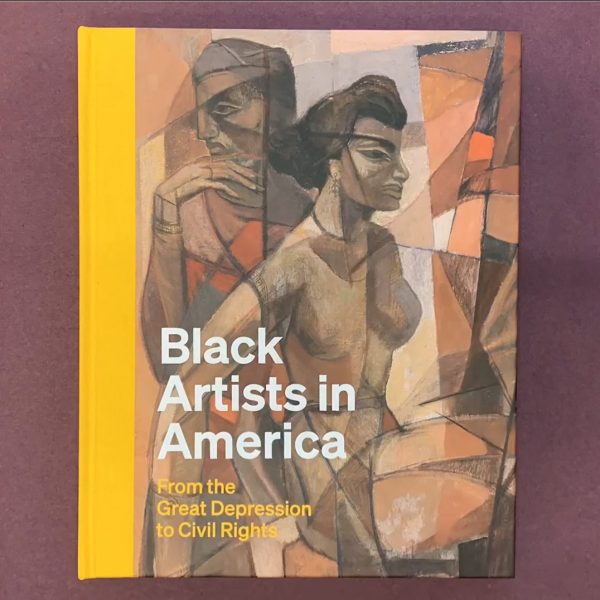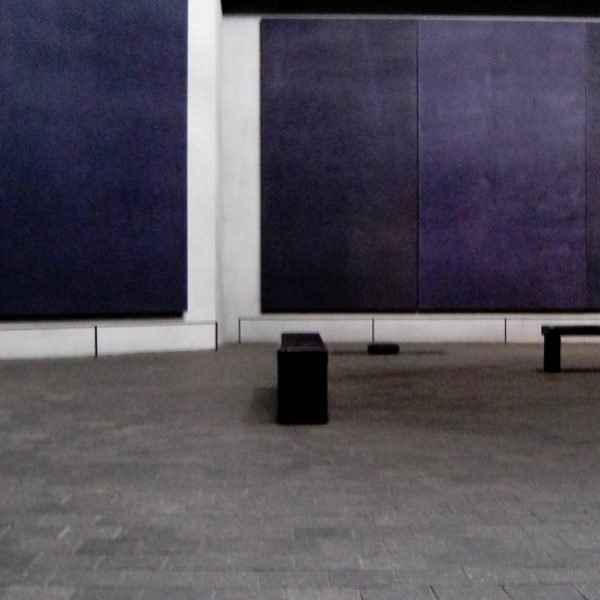Kerry James Marshall’s “SOB, SOB” and David Dabydeen’s Philosophical Aesthetics
Abigail Zitin—
I remember it being at eye level; else how would it have caught my eye? I had gone to see Mastry, an exhibition of works by the African-American painter Kerry James Marshall, at the Met Breuer in January 2017. The painting in question, like most of Marshall’s, is large: six feet by nine. Its central figure is a Black woman, seated on the floor at the top of a stairwell, looking up from a book she has either just closed or not yet opened. She occupies the bottom half of the frame; rising from her head are two cartoon-style thought-bubbles with cloudlike scalloped edges, each with the word SOB in block capital letters followed by a trailing ellipsis, bright white against the more muted white of the wall and ceiling. Behind her, on the right edge of the image, a bookshelf displays a virtual syllabus of African diasporic studies: encyclopedia volumes (A and N), literary works by canonical writers like James Baldwin and Octavia Butler, but mostly anthologies, monographs, and histories: Blacks in Antiquity, Critical Race Theory, From Slavery to Freedom, From Sambo to Superspade.
Among these titles is the one that jumped out at me as a white scholar of philosophical aesthetics in eighteenth-century Britain: David Dabydeen’s Hogarth’s Blacks: Images of Blacks in
Dabydeen published Hogarth’s Blacks in 1985, an early moment in what would turn out to be a prolific career as a novelist, poet, and intellectual identified mainly with Caribbean studies (educated in England, he is Guyanese, his family Indian). His contribution to the postcolonial reimagination of eighteenth-century British studies began, therefore, with putting the Black figures in Hogarth’s artworks at the center of his analysis, figures other writers had been content to understand as marginal and conventional. This work—of really seeing what’s manifestly there to be seen, but has been taken for granted or ignored—continues to this day (recent meditations on this idea include Patricia A. Matthew’s “Look Before You Leap” and Kerry Sinanan’s “Heterogeneous Blackness: Peter Brathwaite’s Eighteenth-Century Re-portraits”). But its continuation represents a problem of memory: why do we require these periodic reminders to see what’s already there, those elements in visual culture that Dabydeen and others like him were directing our attention toward over 30 years ago? Put differently, why do we persist in forgetting?
Kerry James Marshall’s painting-as-lament offers one reason, as I’ve already suggested: knowledge of pain is a painful kind of knowledge to seek out and hold onto. Another reason comes into view when we look more closely at Dabydeen’s book and its reception. What’s striking about his argument is its generosity to Hogarth himself. He credits the artist with an ethical impulse that is, arguably, Dabydeen’s own, namely, the representation of Black people as a form of recognition. Dabydeen’s project of scholarly noticing seeks to correct a history of scholarly neglect; Hogarth’s project of painting Black people in eighteenth-century London, by contrast, may simply register a social fact and reproduce the prejudices that surround that fact. Writing about Dabydeen’s book in the Review of African Studies in 1987, S. E. Ogude questioned Dabydeen’s conception of Hogarth as a champion of the downtrodden, submitting instead that the artist “saw the black man as a necessary aspect of the domestic setup of the upper class, whose members were the target of his satire.” This sober estimation of Hogarth’s racial attitudes has come to seem more plausible than attributing to him
I’ve been mulling over the implications of Dabydeen’s—and Hogarth’s—cameo in Marshall’s painting for years. How many years exactly? It was only in paging back through my phone’s photo library in search of precise date of my visit to the Met Breuer that I noticed the resonance of that moment with this one. My pictures of “SOB, SOB”—a close-up of the bookshelf and another of the text panel, for reference—are followed, a few days later,
Abigail Zitin is associate professor of English at Rutgers University.
Further Reading:



























